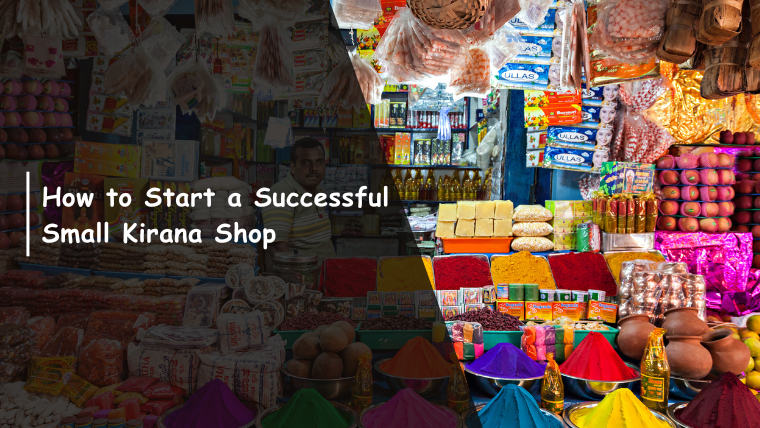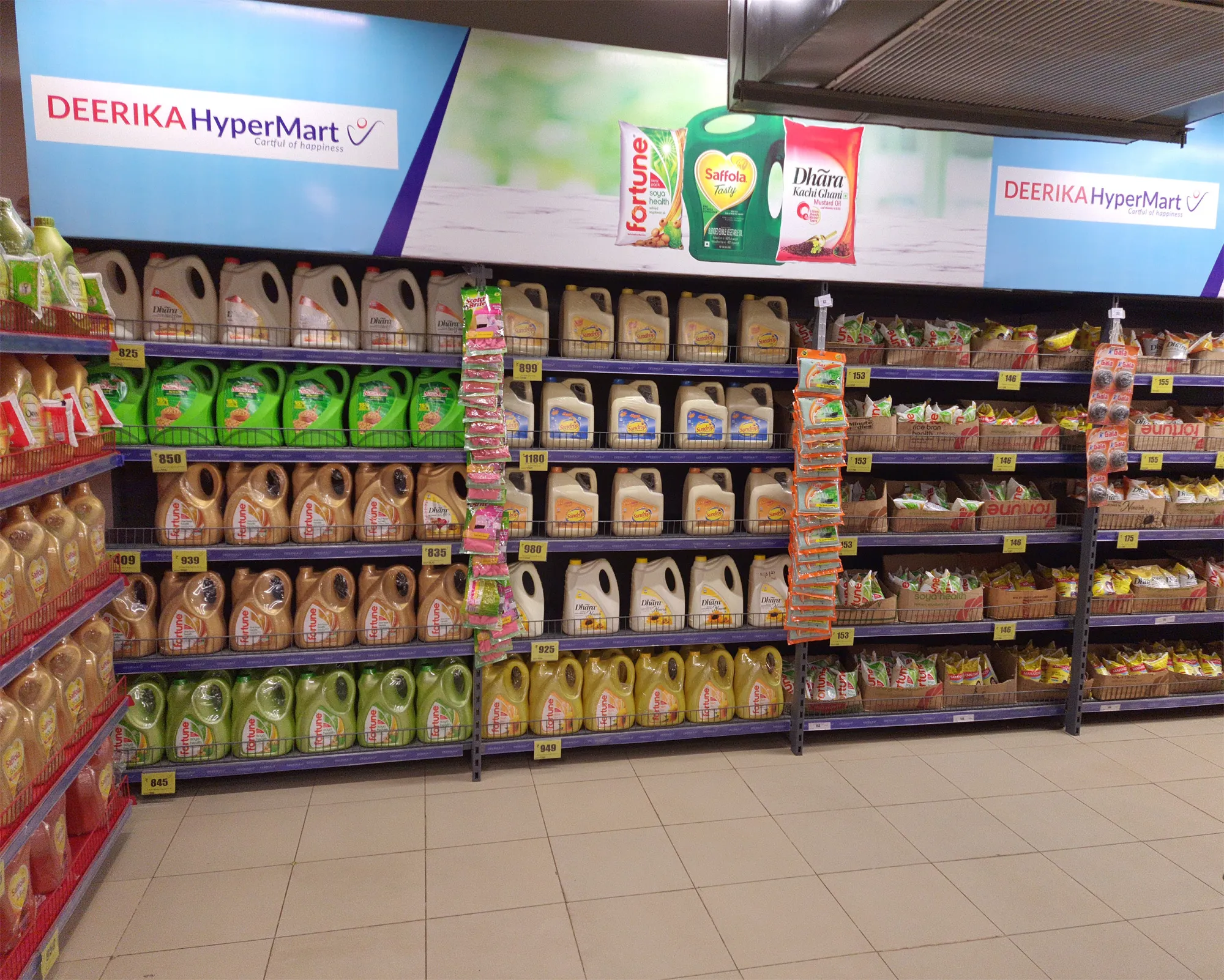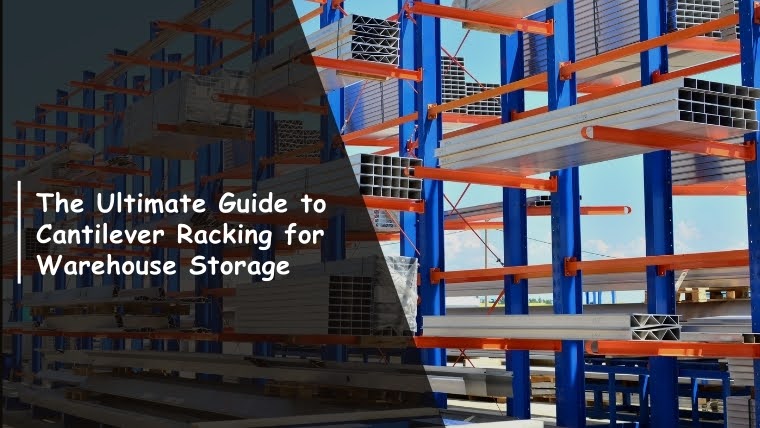How to Start a Successful Small Kirana Shop
Learn how to start a successful small kirana shop with expert tips, strategies, and key steps. Start your business today and thrive in the local market!

Learn how to start a successful small kirana shop with expert tips, strategies, and key steps. Start your business today and thrive in the local market!

Many people want to run their own kirana shop but are unsure where to start. India has an estimated 13 million kirana shops, with four retailer associations in four states. Rural consumer spending has grown steadily in recent quarters, showing that demand for daily essentials remains strong. Digital platforms like ONDC now support small shopkeepers, helping over six lakh sellers reach new customers online.
These changes show that opening a small kirana shop is not only possible but also promising. The real challenge is building a shop that earns trust and keeps customers coming back. Finding the right location, managing stock carefully, and keeping costs under control can be hard. But with a clear plan and smart setup, you can run a store that grows steadily. This guide will show you each step to start and grow your kirana shop.
A kirana store is a small neighbourhood grocery shop that sells daily essentials like grains, pulses, dairy products, snacks, and household items. These shops are usually family-run and serve a specific locality, often building strong personal relationships with customers over time. They are known for their convenience, flexible credit options, and the ability to meet immediate household needs quickly.
In India, kirana stores are the mainstay of the grocery retail sector and handle the majority of consumer purchases for daily essentials. They typically operate in small spaces but stock a wide range of items tailored to the needs of the local community. Their strong understanding of customer preferences and consistent availability of essential goods make them an important part of both urban and rural markets.
A business plan gives your small kirana shop a clear direction from the very beginning. It outlines how much money you need, where it will be spent, and how you will earn consistent profits. With the Indian retail sector set to grow at a rate of $ 2 trillion in value by 2032, without a plan, you may overspend on inventory or miss important steps like licensing and supplier agreements, which can delay your launch.
It also helps you stay prepared for challenges in the kirana store business. With defined goals and sales targets, you can track progress and adjust strategies when required. A strong plan makes it easier to apply for bank loans or government schemes because it shows that your shop is structured and viable.
Having a good grasp of what a kirana store is, let's take a closer look at the benefits that come with running such a business.
Running a small kirana shop can be rewarding because it serves the daily needs of the local community.
Here are the key benefits you can expect when starting and running a kirana store:
The key advantages make the kirana shop a promising venture. However, building a successful shop is not without a plan. Let's break down the steps involved in actually setting up your kirana shop from the ground up.
Also Read: Retail Store Layout and Floor Plan Ideas
Starting a small kirana shop needs careful planning and clear steps to create a business that works well and lasts long. Here are the key steps to help you set up your kirana store:
Before you start, understand the market and your competition in the chosen area. Here are the key points you should focus on during this research:
The right location and layout will help your store attract customers and encourage repeat visits. Here are the important steps for this stage:
To optimize your layout, consider using Expanda Stand’s adjustable shelving, impulse bins, cash counters, and display racks to create an organized, attractive, and functional layout.
A well-planned layout and the right display units can maximise space and make the store look inviting. Below is a table that shows how you can align key elements with their impact:
This structured layout not only improves customer satisfaction but also allows better stock management and efficient use of available space.
A solid business plan will guide you in managing costs and building a strong foundation. Here is what to include when creating your plan:
You will need reliable funds to cover the initial and running costs of your shop. Here are the common ways to arrange the necessary finances:
Legal registrations keep your shop compliant and prevent avoidable stops or fines. Here are the licences you should secure before opening your kirana shop.
Smooth operations will make sure your customers have a consistent shopping experience every time. Here is how you can set up your kirana store operations effectively:
Also Read: How to Start a Grocery Store Business Plan in 2025
Your operations are set, but ensuring consistent growth requires strategies that focus on keeping customers happy and coming back. Let’s look at the best strategies for success.
A small kirana shop can only thrive if it consistently meets customer needs and stays ahead of the competition. You must balance the right product mix, efficient operations, and reliable service to build long-term trust. Below are strategies with actionable steps to strengthen your kirana store and grow steadily:
Every small kirana shop serves multiple customer segments with different habits and expectations. Understanding these differences allows you to stock smartly and design a store layout that attracts repeat buyers.
1. Customer Types and Buying Frequency
2. What Attracts Customers
3. How Customers View Store Layouts
You can rely on Expanda Stand as the mission is to lead the retail fixture industry by delivering innovative, high-quality solutions that enhance store functionality and customer experience
Your small kirana shop should offer variety without cluttering shelves with low-demand products.
Sample Product Mix Table:
Poor stock control leads to empty shelves or expired products. You can use strategies like:
A thoughtful layout makes customers spend more time and money in your store, like:
Despite your best efforts, you might face some challenges. Let’s go over what hurdles are common and how to navigate them.
Also read: Effective ways to use a fruit and vegetable rack for shop
Running a small kirana shop requires balancing multiple operational issues that can impact growth and customer trust. Understanding these challenges can help you build solutions before they affect your business.
By addressing challenges and implementing the right solutions like Expanda Stands, you can turn your kirana store into a reliable community hub. Let’s wrap up with how professional storage solutions can make your store even more efficient.
Expanda Stand builds retail racks, fixtures, and storage that fit tight stores and busy counters. Below is how their offerings map to a small kirana shop and its day‑to‑day needs:
These services combine to support kirana shops in three important ways:
These solutions can help you create a well-organized, efficient space that maximizes both customer experience and sales potential. Moving forward, it's important to consider how these changes fit into the bigger picture of running a successful kirana shop.
Starting a small kirana shop can be a rewarding business when built on the right foundation. From researching your local market to planning a practical store layout, every step plays a role in long-term success. Staying consistent with inventory management, understanding customer needs, and adapting quickly to changes in buying habits can help you build a loyal customer base. A well-structured business plan, combined with smart strategies, will make your kirana shop sustainable and profitable for years to come.
Creating a shop that is organised, attractive, and customer-friendly often requires the right display and storage solutions. That’s where Expanda Stands comes in, offering durable shelving, cash counters, impulse bins, and display units that make kirana stores more efficient and appealing. Their products can help you maximise space and create a better shopping experience without a major investment.
Ready to elevate your kirana shop with durable racks, counters, and display units? Expanda Stand can help you create a store layout that draws in customers and increase sales. Get in touch today!
Opening a small kirana shop can cost between ₹3–10 lakh, depending on the city, location, and shop size. Expenses include rent, initial stock, fixtures, licences, and basic staff costs. Shops in Tier‑1 cities may need a higher budget due to higher rents and inventory requirements.
You need registration under the local Shops and Establishment Act, GST registration if turnover crosses the threshold, and an FSSAI licence for selling packaged food. Depending on the state, additional trade licences or municipal approvals may be required before opening your small kirana shop.
Select a location near residential colonies, offices, or schools with steady foot traffic. This confirms easy access, good visibility from the street, and enough space for shelving and customers to move comfortably. Avoid overly competitive zones where several other kirana shops already operate.
Fast‑moving products like grains, pulses, spices, packaged snacks, dairy products, soft drinks, soaps, and detergents sell consistently. Seasonal items like sweets during festivals and locally preferred brands also perform well. Keep the mix balanced to meet both everyday needs and impulse purchases.
Use vertical shelving to maximise space, place fast‑moving items at eye level, and stock impulse items near the counter. Offer small discounts or combo packs, maintain cleanliness, and use digital tools like UPI and online ordering to attract more customers without increasing space.
Yes, kirana shops can use WhatsApp, Google Business Profile, and platforms like ONDC to accept online orders. Basic POS software can manage billing and inventory digitally, while digital payments like UPI make checkout faster and attract customers who prefer cashless transactions.




Ready to Upgrade Your Process Operations?